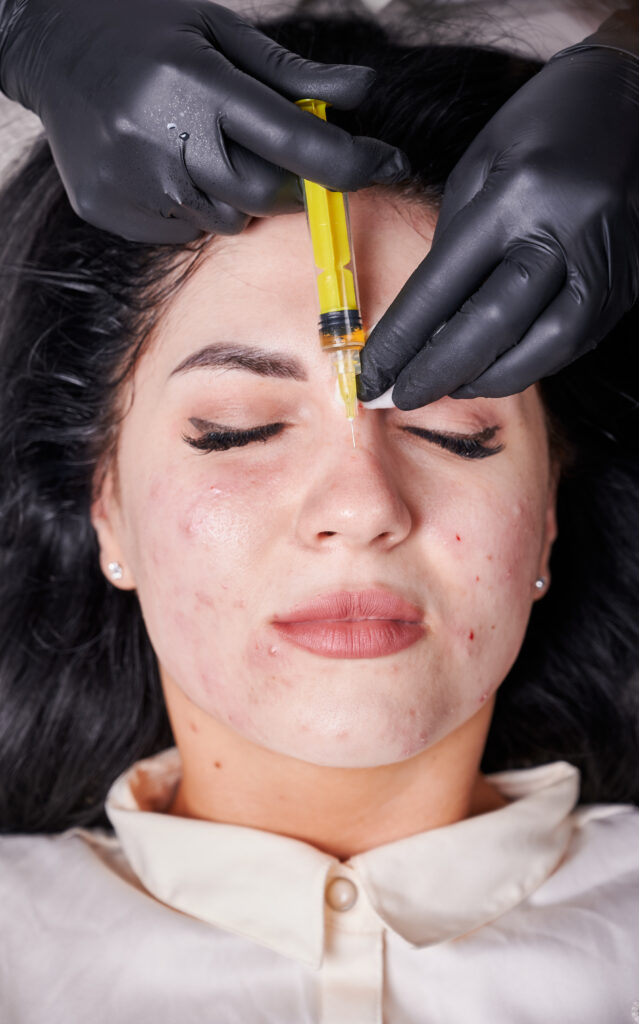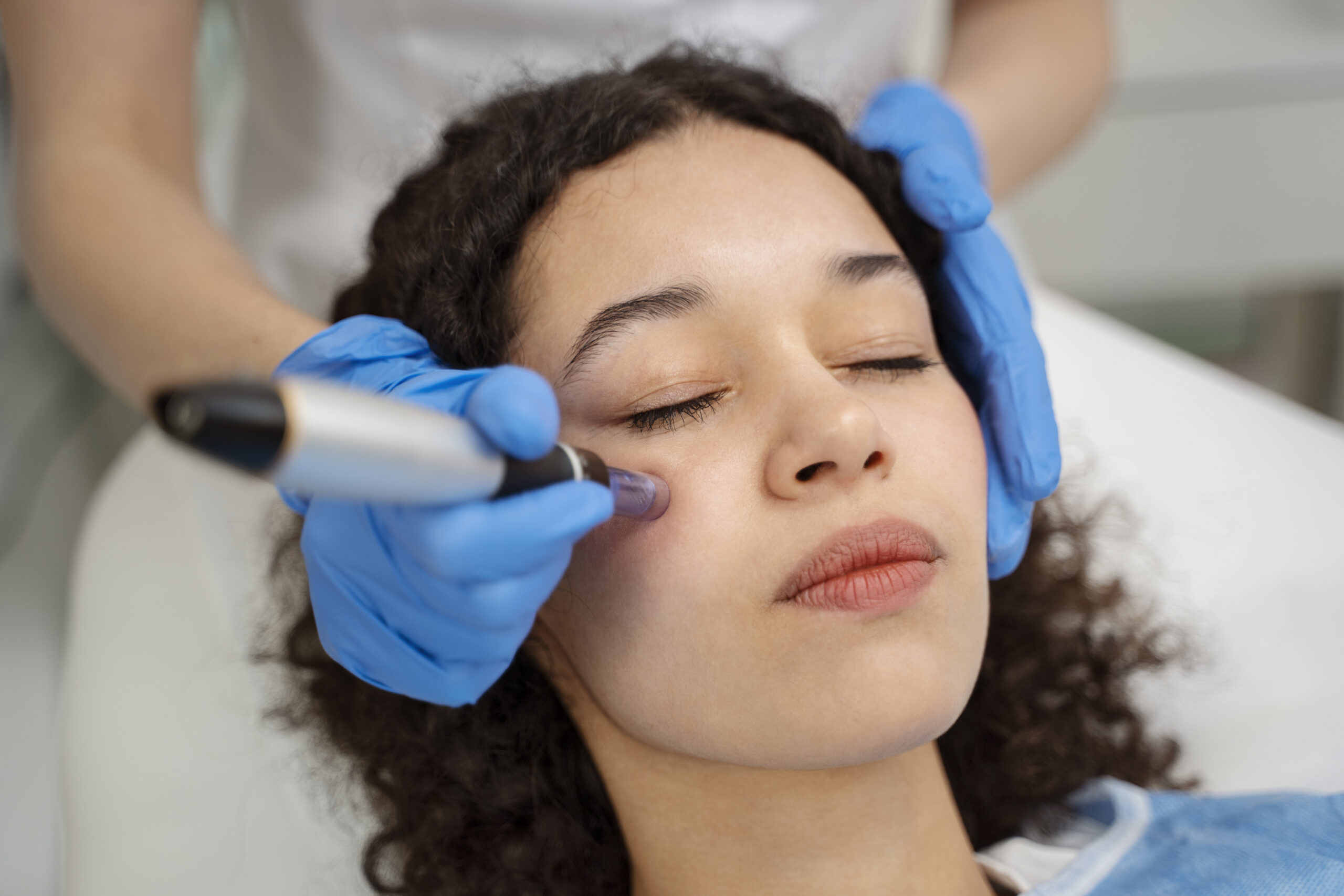Acne scars are a frustrating reminder of past breakouts, often impacting confidence long after acne itself has cleared. Many treatments claim to reduce these marks, but one that has gained significant popularity in dermatology and cosmetic clinics is microneedling.
According to NIH, microneedling has shown promising results in improving skin texture and reducing scar depth. So, does microneedling for acne scars is a good deal? Does it really work?
well, this treatment stimulates the skin’s natural healing response by creating controlled micro-injuries, leading to new collagen and elastin production.
Over time, this process helps soften scars, smooth uneven texture, and rejuvenate the skin. But like any procedure, it comes with pros, cons, and realistic expectations.
What Is Microneedling?
Microneedling, also known as collagen induction therapy, is a minimally invasive procedure that involves using a device with fine needles to create tiny punctures in the skin.
These micro-injuries trigger the body’s wound-healing process, which includes increased collagen and elastin production. The treatment can be done with a manual dermaroller or an automated pen-like device. Sessions usually last 30–60 minutes, and most people need multiple sessions to see significant results.
Microneedling for acne scars is beneficial but it is most commonly performed on the face but can also target scars on other parts of the body.

Microneedling helps acne scars by working on the skin’s natural healing process. When tiny needles create controlled micro-injuries on the surface, the body responds by producing more collagen and elastin.
Since acne scars often form because of damaged or insufficient collagen during the healing of breakouts, this fresh boost of collagen helps fill in the indents and smooth out uneven skin texture over time.
With consistent sessions, microneedling is especially effective for pitted scars such as boxcar and rolling scars, which are usually harder to treat.
Each treatment gradually improves skin thickness and elasticity, softening sharp edges of the scars and making them less noticeable. While results vary depending on the depth of the scars and skin type, most people notice visible improvements after a few sessions.
Although microneedling doesn’t always erase scars completely, it can significantly reduce their appearance, leading to smoother, firmer, and healthier-looking skin. The improvements are gradual, giving a more natural transformation compared to quick fixes.
When combined with proper skincare and sun protection, microneedling results can last long-term, helping individuals feel more confident in their skin.
Benefits of Microneedling for Acne Scars
One of the greatest benefits of microneedling for acne scars is that it taps into the body’s natural healing ability. Instead of using strong chemicals or undergoing invasive surgery, it creates tiny controlled injuries that stimulate collagen and elastin production.
This process gradually fills in acne scars and improves skin elasticity, making it a gentler yet effective option for people who want noticeable results without aggressive treatments.
Another advantage is that microneedling is safe for almost all skin types and tones, unlike some laser treatments that carry a higher risk of causing pigmentation issues, especially in darker skin. This makes it a more inclusive option for people who want scar improvement without worrying about side effects that alter their natural skin tone. Its versatility is one reason it has become a popular choice in dermatology and skincare.
Beyond scar reduction, microneedling enhances overall skin quality. The stimulation of new collagen not only minimizes pitted scars but also improves firmness, reduces fine lines, and smooths rough texture.
Additionally, by creating microchannels in the skin, it allows serums and active skincare ingredients to penetrate deeper, making treatments like vitamin C, hyaluronic acid, and growth factors more effective in boosting results.
ALSO READ
What Are Chemical Peels – 5 Benefits And Risks
Risks and Side Effects of Microneedling For Acne
Like any cosmetic procedure, microneedling comes with some risks, though they are usually minor and temporary when done properly. Common short-term side effects include redness, swelling, and sensitivity, which often feel similar to a mild sunburn.
These reactions typically fade within a few days, leaving the skin smoother as it begins to heal. The greater risks come when the treatment is performed incorrectly or with unsterilized tools.
Using poor technique or unsanitary equipment can increase the chances of infections, prolonged irritation, scarring, or even pigmentation problems. That’s why it’s important to get microneedling for acne by trained professionals who follow strict hygiene standards.
At-home dermarollers are widely available, but they carry a higher risk if not used correctly. Many people press too hard or fail to disinfect their devices, which can lead to more harm than good.
Professional treatments are generally safer and more effective, as dermatologists can adjust the needle depth according to the type of scars and ensure the procedure is done under sterile conditions.
What Results to Expect from Microneedling
Microneedling is not an instant cure for acne scars. Instead, it provides gradual improvements that build with each session.
Most people begin to see noticeable changes after two or three treatments, with scars appearing shallower and skin texture becoming smoother. Typically, 3–6 sessions spaced 4–6 weeks apart are recommended for the best results. The procedure works particularly well for mild to moderate acne scars, especially rolling and boxcar scars.
However, it’s important to have realistic expectations from microneedling for acne scars. It reduces the depth and visibility of scars rather than completely removing them. Some people may need maintenance treatments to keep up results over time.
For individuals with severe or very deep scars, microneedling alone might not be enough. In those cases, dermatologists often suggest combining it with other treatments such as chemical peels, fractional lasers, or subcision. This combination approach can maximize improvements and provide more dramatic results.
Aftercare for Best Results
Aftercare plays a vital role in the success of microneedling for acne. Since the skin is temporarily more sensitive, patients are advised to avoid makeup, harsh skincare ingredients like retinoids or acids, and direct sun exposure for at least 24–48 hours.
Gentle cleansing, moisturizing with fragrance-free products, and applying a broad-spectrum sunscreen are key steps in protecting the healing skin.
Hydration is equally important, as well-hydrated skin recovers faster and responds better to treatment. Drinking plenty of water and using a soothing moisturizer can support collagen production and reduce discomfort.
This helps the skin gradually rebuild strength and elasticity in the days following the procedure. Patience is necessary because microneedling results unfold over time. Collagen remodeling continues for weeks, meaning skin improvements become more visible gradually rather than overnight.
Following a dermatologist’s instructions carefully ensures safer healing, longer-lasting benefits, and the best possible outcome from the treatment.
FAQs
Is microneedling safe for all skin types?
Yes, microneedling is generally safe for most skin types, including darker skin tones. However, those with active acne, eczema, or infections should avoid it until their skin is clear. A dermatologist’s consultation is always best.
How many microneedling sessions do I need for acne scars?
Most people need between 3 and 6 sessions, spaced a few weeks apart, for visible results. The exact number depends on scar severity, skin type, and individual healing response.
Does microneedling have any side side effects?
Microneedling for acne scars can cause mild discomfort, often described as a scratching or prickling sensation. To minimize pain, dermatologists usually apply a topical numbing cream before the procedure.
Can microneedling completely remove acne scars?
Microneedling greatly reduces the depth and visibility of acne scars but rarely removes them entirely. It works best for shallow scars, while deeper scars may need combined treatments for optimal improvement.
Final Thoughts
Microneedling for acne scars has proven to be an effective, minimally invasive treatment for improving skin texture and reducing scar depth. While it isn’t a complete cure, it offers a safe and natural way to achieve smoother, healthier skin when performed under professional care.
With multiple sessions, proper aftercare, and realistic expectations, many people find microneedling to be a worthwhile investment in their skin health.




Join The Discussion